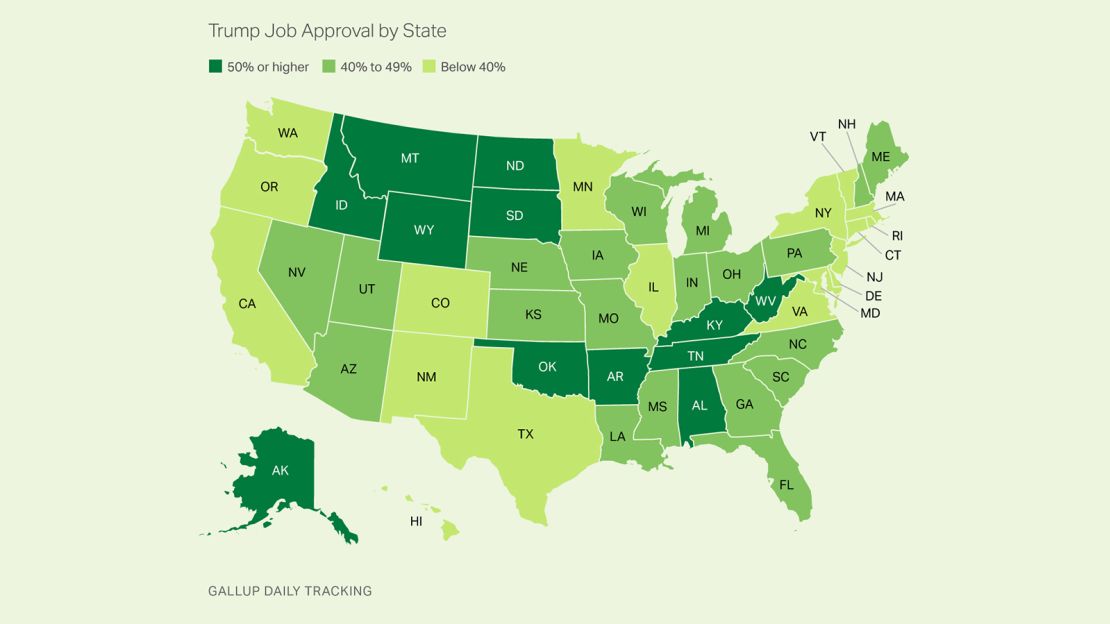President Donald Trump is expected to trumpet a unity message in his State of the Union speech on Tuesday night, an attempt to turn a corner from the divisiveness of his first year in office.
New polling on that first year of Trump shows that the President has a lot of work to do in bringing the country together. There are just 12 states where Trump’s job approval rating was above 50% for the entirety of 2017. That pales in comparison to the 41 states where then-President Barack Obama was above 50% approval for his first year on office.

Those numbers are reflective of two things:
1. Trump’s overall job approval number nationwide was never over 50% in Gallup polling at any point in 2017. Trump’s high point was 366 days ago when he was at 45% approval and 47% disapproval. The last time Trump’s approval was over 40% in Gallup polling was at the end of May 2017 – when he was at 41%. Trump averaged the lowest job approval number – 38% – of any president ever in his first year in office in Gallup data. At the end of 2009, Obama’s approval rating was at 57%.
2. Trump’s most loyal voters – and states – are staying with him. His job approval was highest in places like West Virginia, North Dakota and Wyoming where he won by huge margins in 2016. (One interesting note: Democratic senators are running for re-election in both West Virginia and North Dakota this fall.) Many of those states are also less populated.
Viewed broadly, these numbers should worry Republicans – especially those on the House side hoping to hold onto their majority after the 2018 election.
“Not only is the overall number not encouraging for his party heading into the 2018 midterms, but the latest state-level averages suggest Trump will be a liability for Republican candidates in far more states than he will be an asset,” writes Gallup’s Lydia Saad on the poll results.
History matters here. In the post-World War II era, presidents with approval ratings of 50% or higher going into the midterm elections have seen their side lose an average of 14 House seats. Presidents below 50% job approval lose an average of 36 seats.
That’s a massive difference. In fact, it’s the difference between Republicans holding the majority and not. (Democrats need a 24-seat pickup to regain the House majority.)
At the moment, it’s virtually impossible to see Trump getting over 50% nationally. And it’s an uphill climb for him to get over 50% in a handful of key states where the House majority may well be decided: Ohio (45% approval to 50% disapproval), Pennsylvania (42% to 53%), Minnesota (37% to 58%) and California (29% to 65%).
That reality poses a huge problem for Republicans running for re-election in those states. Do they try to run from Trump in hopes that voters distinguish them from him? Will voters buy that distinction? And will Republican House members lose their GOP/Trump base by trying to run from the President?
No easy questions. And no easy answers either. Welcome to the Republicans’ 2018 election conundrum.

















